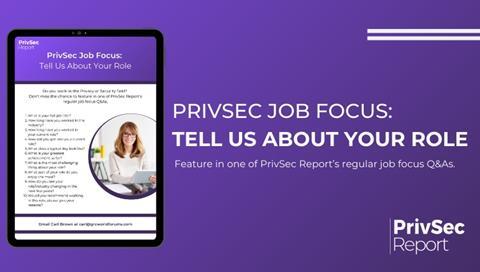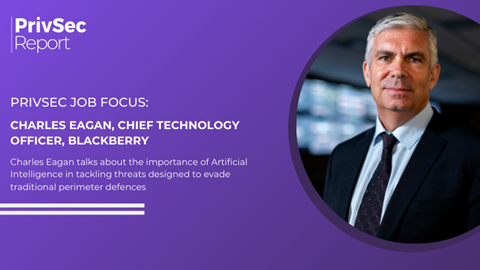In our latest reader-submitted Q&A, Charles Eagan talks about the importance of artificial intelligence in tackling threats designed to evade traditional perimeter defences
What is your full job title?
Chief Technology Officer at BlackBerry
How long have you worked in the industry?
Security. I have worked in and around this industry for my whole career.
How long have you worked in your current role?
Almost three years
How did you get into your current role?
I hold an Honours Bachelor of Mathematics along with an Electrical Engineering degree from the University of Waterloo.
I first became an engineering director in cybersecurity, before moving into product development roles and global leadership for software solutions and innovation.
What does a typical day look like?
I am responsible for the advancement of new technologies and partnerships, with an Emphasis on ML Based Security and the recently announced Amazon/BlackBerry IVY partnership. I also have a focus on Academic Research and Collaboration.
My key focus involves generating technical strategies to help our clients meet their needs.
The biggest challenge for our clients is operating in a quickly evolving tech space, while facing malicious threats from sophisticated bad actors in the connected space.
What is your greatest achievement so far?
Working at the front of the curve of our tech evolution allowed me a front row seat in evolving technologies, but two successes rate equally for me.
First, in the early 2000s, I helped create the largest and most advanced router to power the internet; to this day, it still holds that record.
And secondly, I’m very proud of my involvement in the creation of the BlackBerry 10 phones. From a technology perspective, my team created a device of the future in a few short years.
Security, productivity, and strong user interactions were core attributes – including the introduction of messaging, predictive text, and secure communications. Current mobile devices are still catching up to the features that we started deploying in 2012.
The common bond between these two successes, and a large passion of mine, is the underlying BlackBerry QNX solution.
What is the most challenging thing about your role?
Cybersecurity prowess is not straightforward, and we are always evolving in our efforts to bring safe solutions to market – whether it is in automobiles, drones, banks, government, or corporations of any size.
BlackBerry has been securing mobile devices and infrastructure for 35 years, and we’ve always evolved to help the good actors do business safely in the brave new connected world.
What part of your role do you enjoy the most?
New applications of machine learning are very exciting to me. Training computers to immediately find patterns across broad sets of data, and process data far beyond the capability of the human brain, is such a powerful emerging capability.
This complex pattern detection enables us to build solutions that serve health, vehicle safety, communications, security, and more.
How do you see your role/industry changing in the next few years?
The threat landscape is wider and more complex than ever.
From an IT security technology perspective, we will see continued development of AI-based threat detection and prediction solutions. I cannot stress the importance of this enough: today’s cybersecurity threats are vast and incredibly smart, and many are employing AI themselves in a weaponised form.
We are seeing more threats designed to evade traditional perimeter defences, which are invisible to the standard threat detection methods that rely on blacklists and malware signatures.
This is where AI is so important: intelligent technologies lie at the heart of the solution to rapid and new cyberattacks.
These technologies help fuel automated and predictive threat detection, which can spot the signs of a threat before it infiltrates systems – it’s replacing the typical reactive response with a proactive one.
AI-based cybersecurity solutions are not only capable of preventing known threats, but of predicting and preventing new threats before they have the chance to cause significant damage.
Would you recommend working in this role? Please give your reasons
Yes. In my field, we use machine learning to build solutions across all layers of the security domain.
Humans still play a vital role providing complex judgement and subject matter expertise, but together, humans and computers are finding better solutions to unique and difficult attacks.
Training computers to immediately find patterns across broad sets of data, and process data far beyond the capability of the human brain, is such a powerful emerging capability. This complex pattern detection enables us to build solutions that serve health, vehicle safety, communications, security, and more.

Do you work in privacy, security or data protection? Don’t miss the chance to feature in one of PrivSec Report’s regular job focus Q&As.
We are looking for people who work in privacy, security and data protection roles and those who work in related legal and regulatory fields across a range of industries to tell us about their everyday job.
Just fill in our short Q&A (see questions below) and submit a photograph to be considered for inclusion. We want to feature people of all levels of seniority.
If you want to take part, email Carl Brown at carl@grcworldforums.com










No comments yet